Looking for the best sugar substitute for coffee?
You’ve come to the right place!
I’m going to share a bunch of fantastic healthier options with you and tell you everything there is to know about all my favorite natural sweeteners.
I’ve also thrown in some more subtle options, in case you’re looking to add just a touch of sweet flavor to your morning brew.
To round things off, I’ll share a few tips on how you can brew coffee that’s sweeter to begin with.
That’s right – how to add sweetness without even adding anything sweet.
Ready to find out more?
Let’s get started!
7 Natural Sweeteners For Coffee
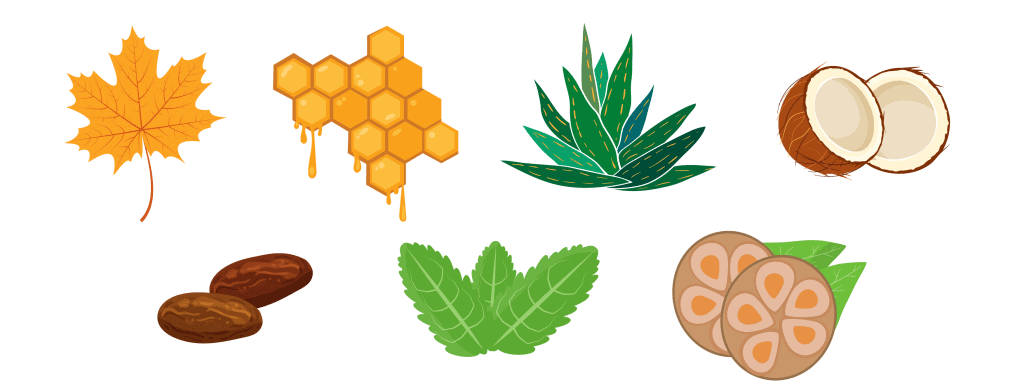
If you’re looking for a healthier refined sugar alternative to put in your coffee, you should definitely stick to natural sweeteners.
Not only are they naturally sweet and delicious – they also each provide fantastic health benefits that you don’t get from plain old white sugar.
Here are some of the best natural alternatives to sugar that you can try out in your coffee.
Pure Maple Syrup
I’m going to start with maple syrup, just because it’s my personal fave. I don’t take my coffee sweet very often, but when I do – maple syrup is my go-to.
I mean, who doesn’t love the sweet taste of maple syrup?
And it goes with coffee perfectly. It actually enhances the subtle flavors of the coffee, while adding a smooth richness to your favorite brew.
It also dissolves easily – even in cold beverages. This makes it perfect for iced coffees. I don’t know about you, but the thought of a nice, frosty maple iced coffee is enough to make me drool.
Fun fact: Maple syrup has a higher concentration of antioxidants and minerals than honey, plus it hasn’t got as many calories.
It also has a lower GI (glycemic index) than sugar. Not by a whole lot though – consuming this stuff in large amounts definitely isn’t healthy by any means.
Sadly.
Honey
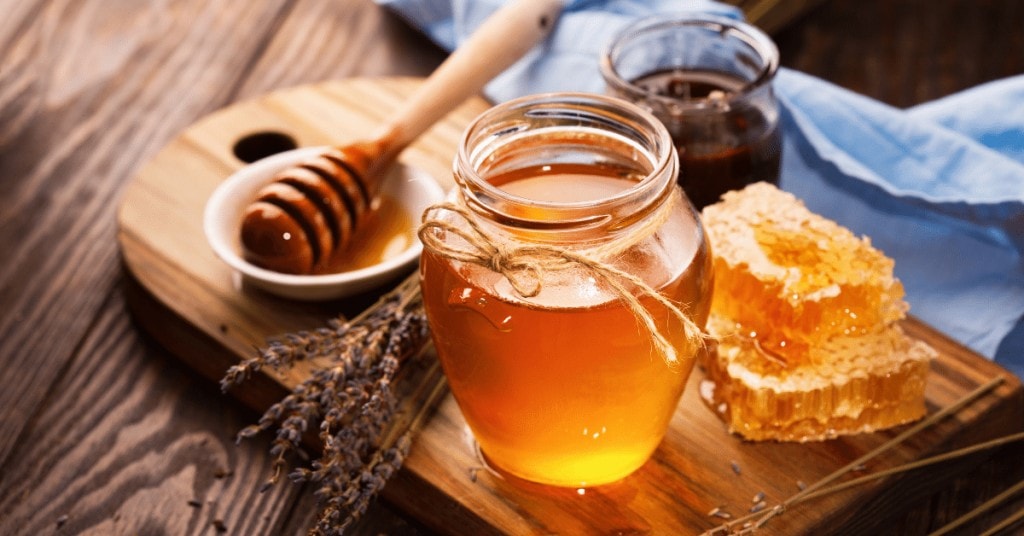
We’ve all had honey in our tea.
But have you tried honey in your coffee?
If you haven’t and you’re looking for a healthier sugar alternative, honey is another great option I’d highly recommend giving a go.
Like maple syrup, honey also contains antioxidants. That means it’s good for cholesterol levels, blood pressure and heart health – as long as you only have a little bit each day.
And of course as we all know, it tastes absolutely heavenly.
Although, it doesn’t dissolve very well in cold liquids, so I only use it when I’m making a nice, hot coffee drink I can easily mix it into.
Also, depending on the type of honey the glycemic index can be nearly as high if not even higher than regular sugar. So if that’s something you’re trying to watch, honey might not be the best choice.
Agave Nectar
Ah, the agave plant.
Not only has it given us tequila – it’s also given us this sweet nectar for our coffee.
Agave nectar (or agave syrup, as it’s sometimes called) has a really low GI, which is its main selling point. Because of this, many people believe it’s a good choice if you’re trying to lose weight.
Here’s the thing, though –
That isn’t exactly true.
Even though it has a low GI, agave nectar contains a whole lot of fructose, so it’s no friendlier to your diet than plain sugar.
And the fructose content also means it can raise your blood triglyceride levels. In other words, it isn’t exactly great for your heart like honey and maple syrup are.
Basically, this natural sugar substitute isn’t much better than sugar – if at all. But it is a lot sweeter than sugar, so you can use a smaller amount to achieve the same level of sweetness in your coffee.
Coconut Sugar
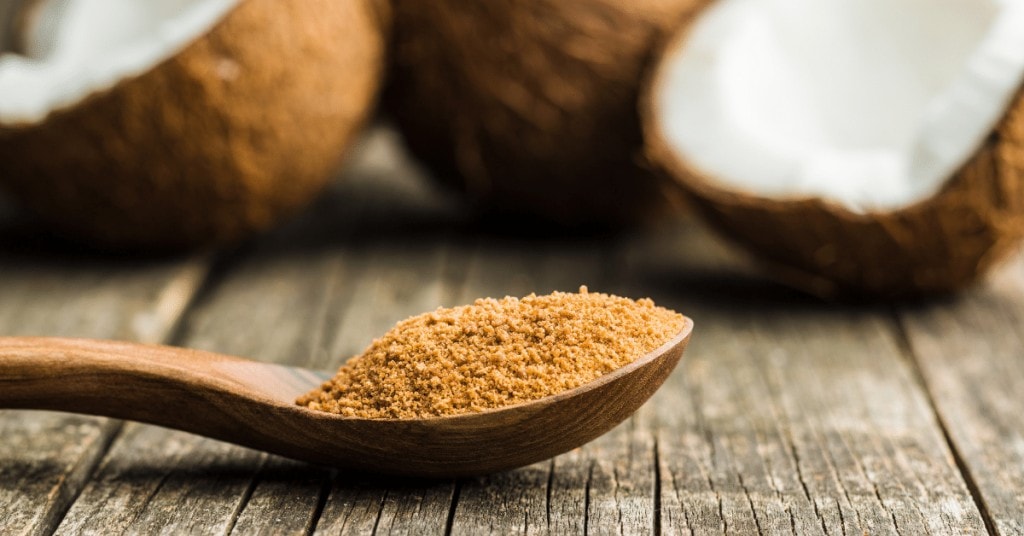
A natural sugar substitute that’s become really popular in recent years is coconut sugar.
But is it really any better than sugar?
Well, it has a much lower GI than sugar, thanks to a fiber it contains called inulin.
But like agave nectar, it also has a lot of fructose in it.
So, in short – no, it isn’t a whole lot better. But it is still better.
If anything, it’s unrefined, making it a more natural sweetener.
It also contains minerals like iron, zinc, calcium and potassium. Granted, these are only present in trace amounts, so it’s unlikely they’ll actually have any real impact on your health.
In any case, one thing is for sure: it tastes wonderful. It doesn’t taste like coconut, but it does have a unique flavor reminiscent of brown sugar and caramel.
As you can imagine, this complements the taste of your coffee beautifully.
Dates
One of the best natural sweeteners you can find are dates.
They have a low GI and they contain enough fiber and potassium to actually contribute to your daily intake.
In fact, dates contain more vitamins, minerals and fiber than most other natural sweeteners.
That said, they’re sweet because of all the fructose in them. So, you still want to consume dates in small amounts – like all sweeteners. Nothing sweet is healthy if you overindulge.
There are 3 ways you can use dates to sweeten your coffee:
- Date sugar
- Date syrup
- Date paste
You can buy these, but you can also easily make any one of them yourself at home.
I’d definitely recommend sticking to syrup, because it mixes in with coffee a lot easier than date sugar or paste. If you’re using sugar or paste, try dissolving it in a little bit of hot water before you add it to your coffee.
Stevia
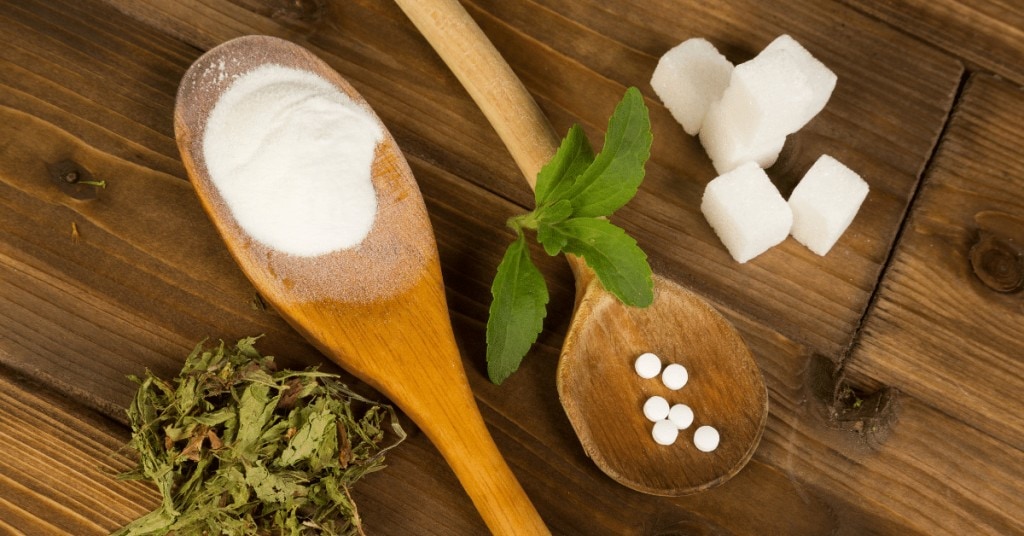
Most stevia sweeteners come in powder, liquid or tablet form. They’re typically mixed with erythritol, dextrose or maltodextrin. This is because of the high potency of stevia on its own.
But you can also make your own homemade sweetener using leaves from the stevia plant.
This is a good one if you’re watching your waistline, since it has a GI of zero and zero calories.
That’s right, none at all.
Sweet, natural and diet friendly – what more could you ask for?
The main downside is that the taste isn’t for everyone. I for one personally don’t care for the taste of stevia. It has this weird aftertaste that I just can’t get used to. It kind of reminds me a little bit of the taste of an artificial sweetener, which I’ve never been fond of.
But a lot of people I know really like it, so if you haven’t tried it don’t let me deter you. Stevia has a pretty strong fan base, so just because I don’t like it doesn’t mean you won’t.
Just keep in mind that pure stevia can be anywhere between 30 and 300 times sweeter than sugar, so don’t go overboard. Add small amounts until you reach a level of sweetness you’re happy with.
Monk Fruit Extract
Something you don’t see as often is monk fruit extract. And that’s a shame, because it’s actually one of the better options out there.
But monk fruit is difficult to cultivate, and importing it costs a lot. So for that reason, it isn’t as readily available as most other sweeteners.
Like stevia, sweeteners made from monk fruit don’t have any calories or fructose, so their GI is also a big fat zero.
But again, like with stevia, a lot of monk fruit sweeteners are mixed with erythritol, dextrose, maltodextrin, and other fillers.
It is, however, also possible to get your hands on pure monk fruit extract.
If you’ve ever heard anyone complain about monk fruit sweeteners having a cooling aftertaste – guess what? They’ve probably only tried monk fruit sweeteners with a lot of erythritol in them. Erythritol is a sugar alcohol and it has a cooling effect, kind of like toothpaste does.
That said, the monk fruit extract itself also has its own particular taste, and a lot of people aren’t fond of that either. Others enjoy it thoroughly though, so the only way to find out whether it agrees with your tastebuds is to give it a go for yourself.
6 Sugar Substitutes That Aren’t Sweet
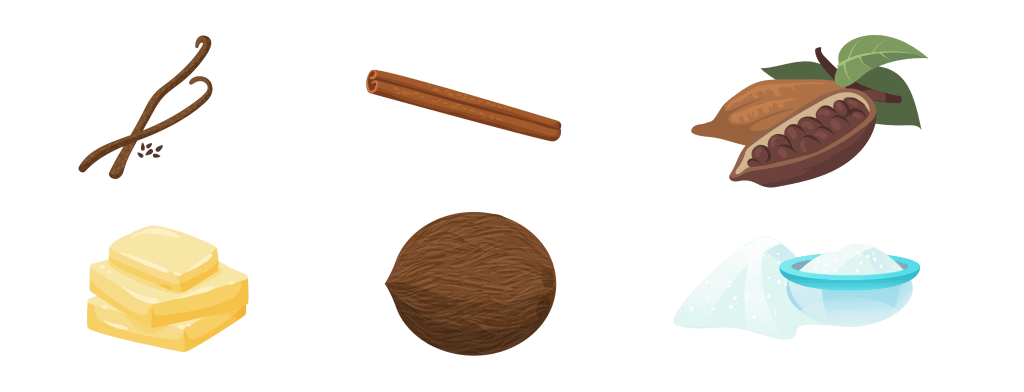
Now, I’m going to be straight up honest:
If you’re looking for a sickly sweet cup of coffee – none of these are going to do it for you.
But if you need to watch your GI for health reasons, adding one or more of the following ingredients can be a good compromise.
So if you’re a fan of sweet coffee but you can’t have it, these things will give your coffee a little flavor twist that’ll make it taste more pleasant.
Vanilla
Mmmm… vanilla. It’s definitely one of the yummiest things you can put in your coffee.
It might not actually be sweet, but it still kind of is, if you know what I mean.
It smells sweet, so it’ll add a nice subtle sweetness to the aroma of your coffee. And it complements the flavor of coffee beautifully, too.
You can use real vanilla beans, or a pure vanilla extract. Other extracts can also be a nice addition to your coffee – like hazelnut, almond, or caramel.
Just keep in mind that they are quite strong, so you don’t need much. A couple of drops per cup should be more than enough.
If you add too much, the taste will be overpowering, and it won’t be very enjoyable. So, add a tiny bit and see how it tastes. Remember – you can always add more, but you can’t add less.
Spices

Adding a pinch of spice like cinnamon or nutmeg to your coffee is a popular way to give it a little extra flavor kick.
Anyone who’s ever been to a Starbucks already knows that.
But it doesn’t stop at just cinnamon and nutmeg. There are a bunch of other spices that can make a fantastic addition to your morning cup of joe.
Here are some other spices you can try:
- Cardamom
- Pumpkin spice
- Allspice
- Star anise
- Lavender
OK, so lavender is a herb, not a spice. But now is not the time for nitpicking.
All of these flavors go wonderfully with coffee, as they’re flavors that are often found in coffee themselves.
Don’t go overboard, though. You only need a little bit, or it’ll be too overpowering and ruin the taste of the coffee. A light sprinkle is more than enough.
Unsweetened Cocoa Powder
It’s no secret that chocolate and coffee go together amazingly.
That’s why so many chocolate dessert recipes call for a shot of espresso. And many coffee drinks include some form of chocolate, too – chocolate syrup, chocolate powder, or actual chocolate itself.
If you’re a fan of this mocha flavor, but you’re looking for a sugar free option, try adding a little bit of unsweetened cocoa powder to your coffee.
And it’s good for your health, too!
Cocoa powder is chock-full (excuse the pun) of theobromine. If you’ve never heard of it, it’s an alkaloid that can reduce inflammation and shields against cancer, diabetes and heart disease.
It’s also packed with minerals like iron, zinc, selenium, and magnesium. These are great for your immune system, muscles, and nervous system.
Chocolatey coffee that’s packed with nutrients?
Yes, please and thank you!
Butter And/Or Coconut Oil
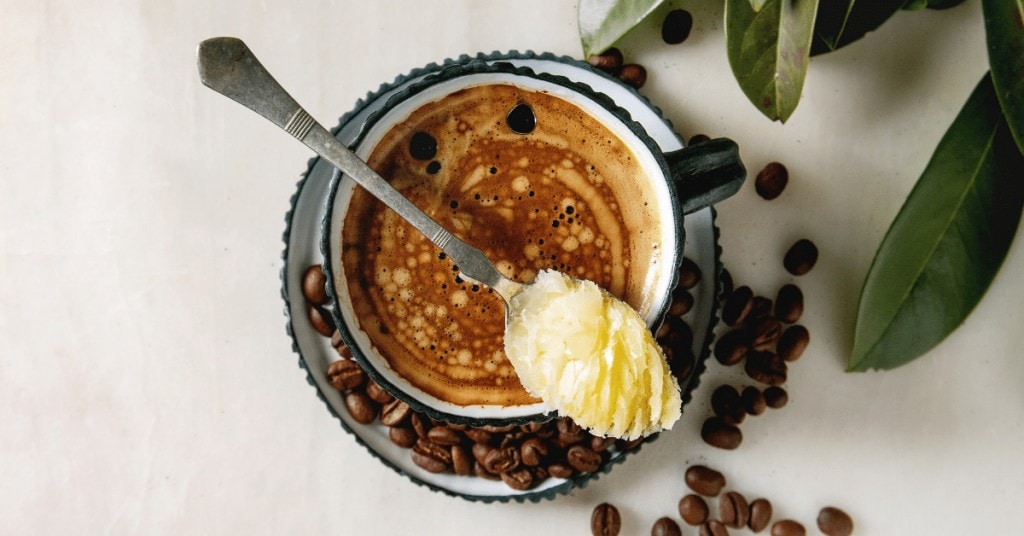
Adding a fat like butter or coconut oil (or both) to your coffee gives it a richer, creamier texture.
If you’re on a keto diet, you might’ve already tried butter and coconut oil in your coffee.
In the keto community, it’s known as bulletproof coffee – and it has a ton of butter and oil in it. This makes it super creamy, rich and tasty – but also super high in calories.
The idea of bulletproof coffee is to replace a meal, though.
So if you’re not on a keto diet, you can try adding a less dramatic amount of butter and/or coconut oil into your coffee to make it just a bit creamier and yummier.
I personally like to add just coconut oil, because it’s a healthier fat than butter. On top of that, it also gives your coffee a nice, subtle coconut flavor that I personally adore.
You can keep it simple and mix it into your coffee with a spoon. Or, you can blend it with the coffee for an even creamier treat.
Coconut Cream
Love the taste of coconut but not keen on the idea of oil in your coffee?
Coconut cream is another great way to get a creamy, delicious coconutty cup of coffee.
It’s creamy, it’s vegan, it smells like a vacation on a tropical island… I mean, honestly, what’s not to love?
The one thing that might put people off is curdling. Coconut cream can sometimes separate when you put it in your coffee, which gives you not-so-smooth-and-creamy lumps in your joe.
If you’re having issues with curdling, here’s what you should do:
Avoid pouring the coconut cream over the coffee. Instead, do it the other way around. Add your cream to the cup first, and then very slowly add coffee, all the while stirring to incorporate.
By doing this, you let the coconut cream get used to the heat at a pace it can handle. As a result, you drastically reduce the chances it’ll curdle in your cup.
Oh, and did I mention that you can also whip it?
Well, you can. This will make it even creamier in your coffee, and it’s especially delicious as a topping on iced coffee drinks.
Sea Salt
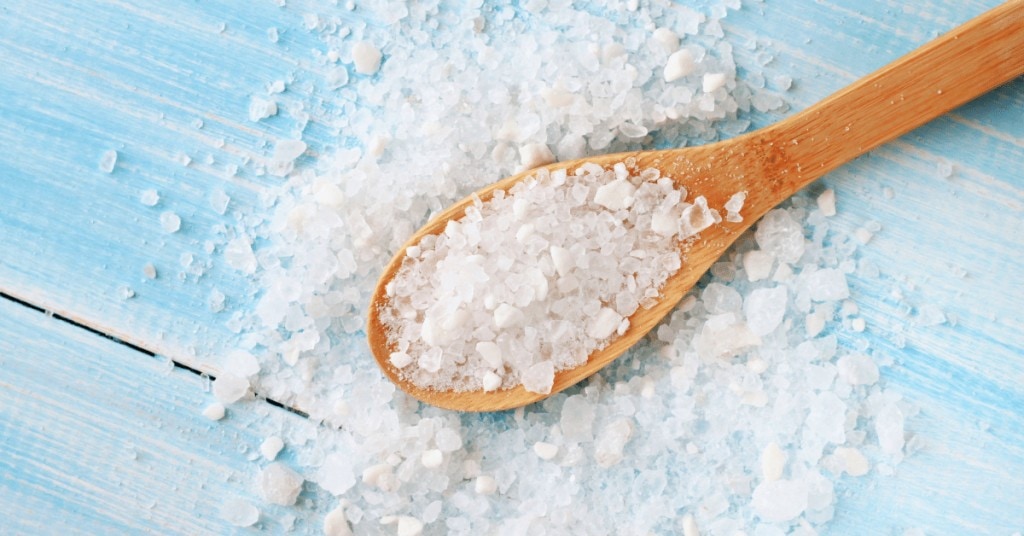
Did you know that adding a little bit of sea salt to your coffee can actually make it sweeter?
This might sound contradictory, but it’s actually true. It’s an incredibly effective trick if you want to tone down the bitterness of your coffee without adding a sweetener.
How does it work?
As it turns out, a little salt can bring the coffee’s natural sweetness to the forefront, making it taste less bitter. When the bitter taste is suppressed, the sweetness becomes more pronounced. Basically, it’s tricking your taste receptors into thinking the coffee is sweeter.
Pretty neat, huh?
The key is to only add a tiny amount. If you overdo it, you’ll end up with salty coffee – yuck.
6 Tips For Brewing Sweeter Coffee
Finally, I want to talk about some factors that influence the sweetness of your brew itself.
There are actually quite a few things you can do to make your coffee a little sweeter, without actually adding any sweeteners to it.
From selecting the right beans, to the right roast, grind, and brewing method –
Here’s everything you need to know about getting the sweetest brew possible.
Choose Arabica Beans
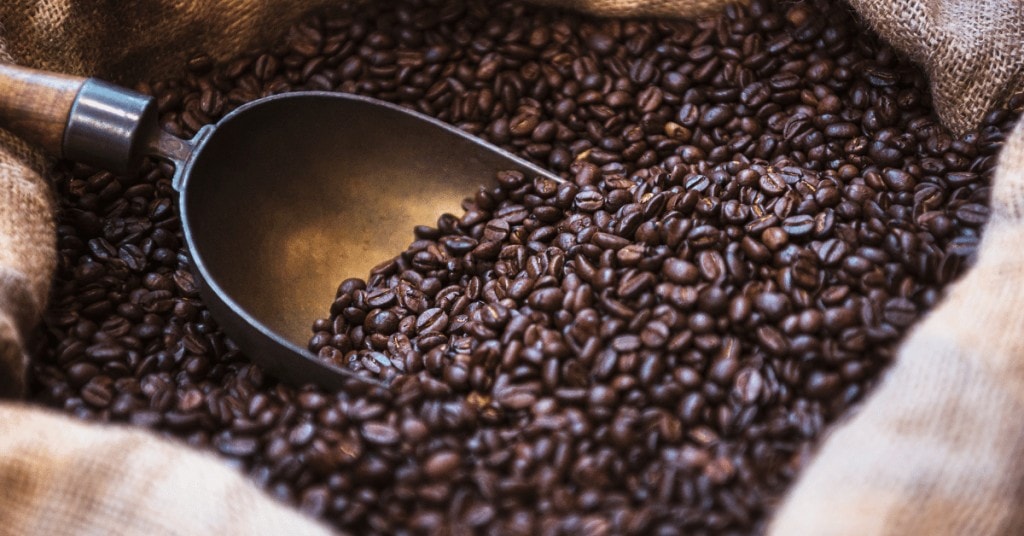
As you may or may not know, there are 4 types of coffee beans consumed throughout the world. That said, the vast majority are of either the arabica or robusta variety.
So, those are the ones you’re most likely to encounter.
Now, a lot of the time you’ll come across blends of arabica and robusta together. However, if you want to get the sweetest brew you can, you should go for pure arabica.
Why, you might be wondering?
Well, arabica beans are a lot less bitter than robusta.
Ever wondered why the Vietnamese mix their coffee with sweetened condensed milk?
It’s because nearly 90% of all the coffee produced in Vietnam is robusta. The sweetened condensed milk is sweet enough to dull the bitterness of the coffee, making it more palatable.
So, on the flipside, if you brew your coffee using pure arabica beans, you won’t have to sweeten it at all. As long as you get the extraction right, it shouldn’t have any harsh bitterness at all.
Depending on the region it’s from, it might even have naturally sweet notes in its flavor profile.
Go For A Medium Roast
It’s a good idea to stick to a medium roast if you’re looking to get the sweetest results.
Darker roasts are known for having more pronounced bitter notes. On the other hand, acidity often comes to the forefront with lighter roasts.
So, a medium roast is a happy medium (again, excuse the pun) – not too much bitterness, not too much acidity. You could say it’s the sweet spot (last one, I promise) right in the middle.
Look out for roasts that have naturally sweet aromas in their flavor profile.
Use A Medium Grind
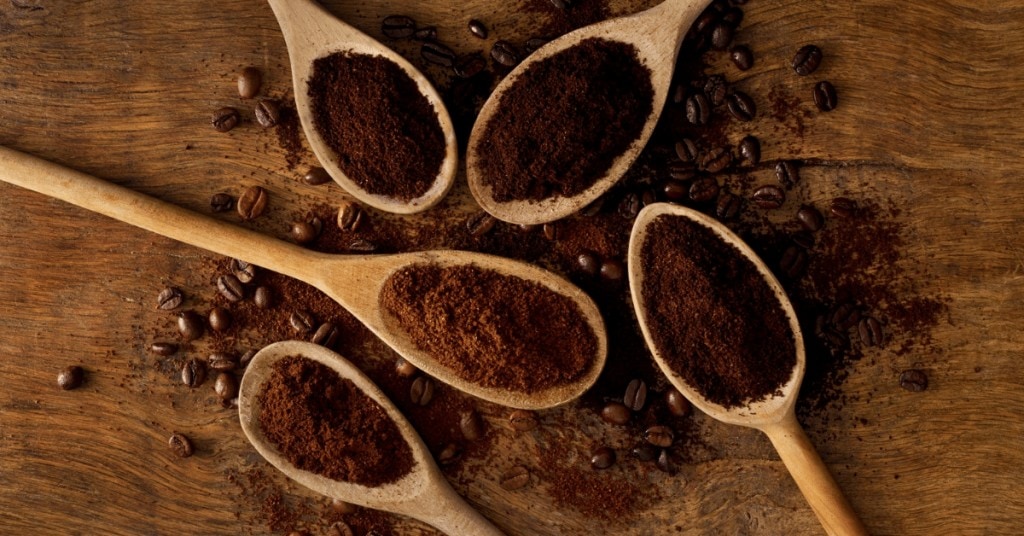
But choosing the right beans and roast isn’t enough.
To get a sweet brew, you also have to make sure the grind is just right.
Now, this will vary depending on your brewing method of choice. Obviously, if you’re making espresso you’ll need to use a fine grind.
But then again, espresso probably isn’t the best choice if a sweeter brew is what you’re aiming for.
Generally speaking, a medium grind is most likely to give you a sweeter cup of coffee.
That means you should go for a brewing method where a medium grind is suitable. For the most part, these are pour over methods like Chemex, Hario V60, and Kalita Wave.
Each of these methods can give you a nice, sweet brew. That is, as long as you use the right type of coffee and get the method right.
Try Cold Brew Coffee
But it isn’t just pour over methods that’ll give you a sweeter brew.
Another great method you can try out is cold brew.
The fact that it’s brewed with cold water instead of hot makes cold brew naturally sweeter. In fact, the gentle sweetness of cold brew coffee is part of the reason it’s so popular.
So, if you’re looking for a sweeter cup, definitely consider giving it a shot. Making a cold brew concentrate at home is ridiculously easy, so there’s really no reason not to.
If you do decide to try cold brew, you can disregard the previous tip. For this method, you’ll want to use an extra coarse grind.
This is because of the long brewing time – anything finer is likely to cause over extraction. And if that happens, your coffee will come out terribly bitter, which is the opposite of what you want.
Use Filtered Water
The water you use to brew your coffee can affect the taste more than you might think.
Plain tap water is pretty questionable in most places. I mean, let’s face it – there are plenty of things that could be in the water, and many of them can make your coffee taste slightly different.
Bottled water and filtered tap water are far less likely to have anything floating around in them that can affect the flavor of your coffee.
That’s why it’s always undoubtedly safer to go with filtered or bottled water.
You might think it’s no big deal. But if you’re looking to get a sweeter brew, you’d be surprised how much of a difference the water you’re using can actually make.
Get The Temperature Right
According to the National Coffee Association, the ideal temperature for brewing coffee is anywhere between 195 and 205°F.
Why?
Well, the aim is optimal extraction. And water temperature is one of the main factors that determines how well flavors will be extracted from the coffee.
So, if the water is too hot, you’ll end up with over extracted coffee. It’ll taste bitter and gross.
On the flipside, if the water isn’t hot enough, it won’t be able to extract enough flavor from the coffee. As a result, your coffee will taste weak, which will also be pretty gross.
But within this magical temperature range, the water can extract just the right amount of flavor from the beans.
And what does that give you?
A well balanced, full flavored cup of sweet deliciousness.
That said, while this figure applies to many brewing methods, it doesn’t apply to every brewing method.
For instance, AeroPress coffee is often brewed at lower temperatures, ranging from 175 to 185°F.
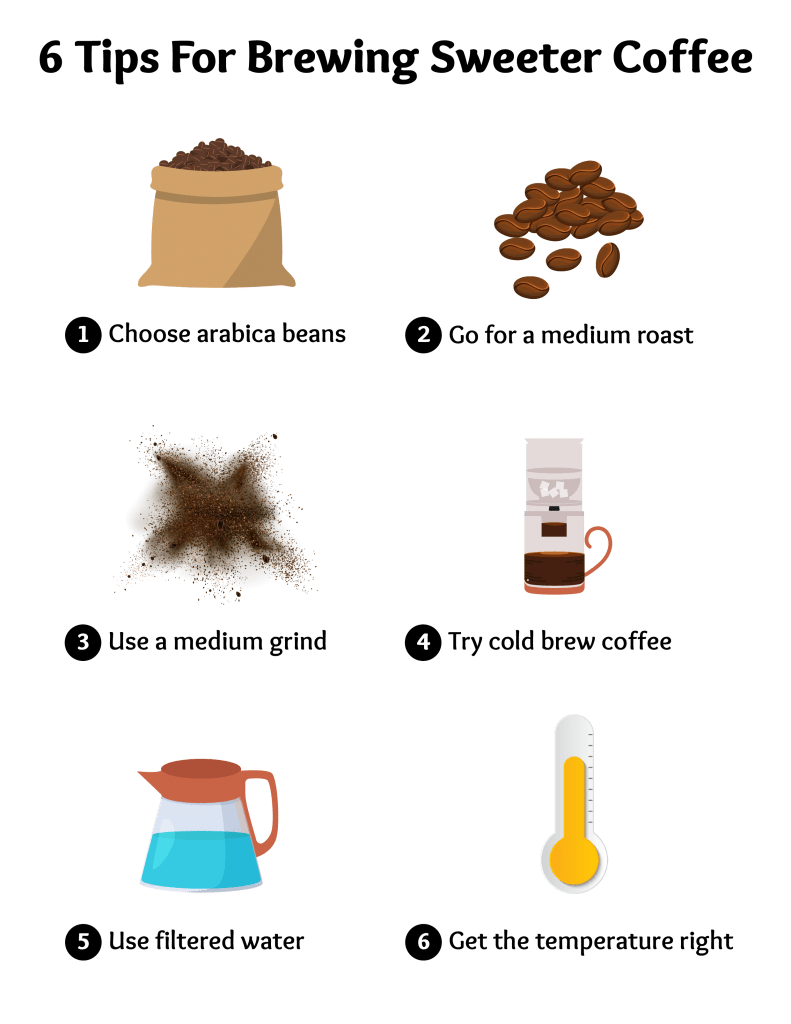
The Bottom Line
If you’re looking to cut back on sugar, but you love a sweet cup of joe, there are plenty of great natural substitutes out there you can turn to.
If you’re avoiding sweeteners altogether, that’s fine too. There are lots of different things you can add to your coffee that’ll give it a touch of sweetness, without actually sweetening it.
And you can even tweak your brewing process to get sweeter coffee from the get-go.
Who needs refined white sugar when there are so many better choices available?
That’s right – not you!










